Abstract
The effect of monensin (0 or 33 μg/g of diet) upon rumen fermentation in the presence and absence of methanogenesis was determined in vitro by using mixed rumen organisms continuously cultured for 17 days. Methane was inhibited by dichloroacetamide (DCA; 32 mg/day) or by a pH of 5.1. Monensin effected a significant decrease in the ratio of acetic to propionic acid in the presence or absence of methanogenesis. In the absence of methanogenesis, the decrease in the ratio of acetic to propionic acid was entirely the result of increased propionic acid, whereas in the presence of methanogenesis the decrease in the ratio was the result of a combination of decreased acetic acid and increased propionic acid. There was a complementary interaction between monensin and DCA on volatile fatty acid production (expressed as millimoles of carbon per day). Addition of monensin to DCA-treated cultures resulted in the production of more acid; however, monensin and DCA had no beneficial effect on total carbon formed as acid and gases as compared with nonsupplemented control cultures. The monensin and DCA also resulted in greater digestion of neutral detergent fiber and less accumulation of formic acid and hydrogen as end products than did DCA alone. l-Lactic acid was produced in small but significantly greater amounts by the low-pH cultures, which also had less volatile fatty acid carbon formed from the fiber fraction of the forage supplied.
Full text
PDF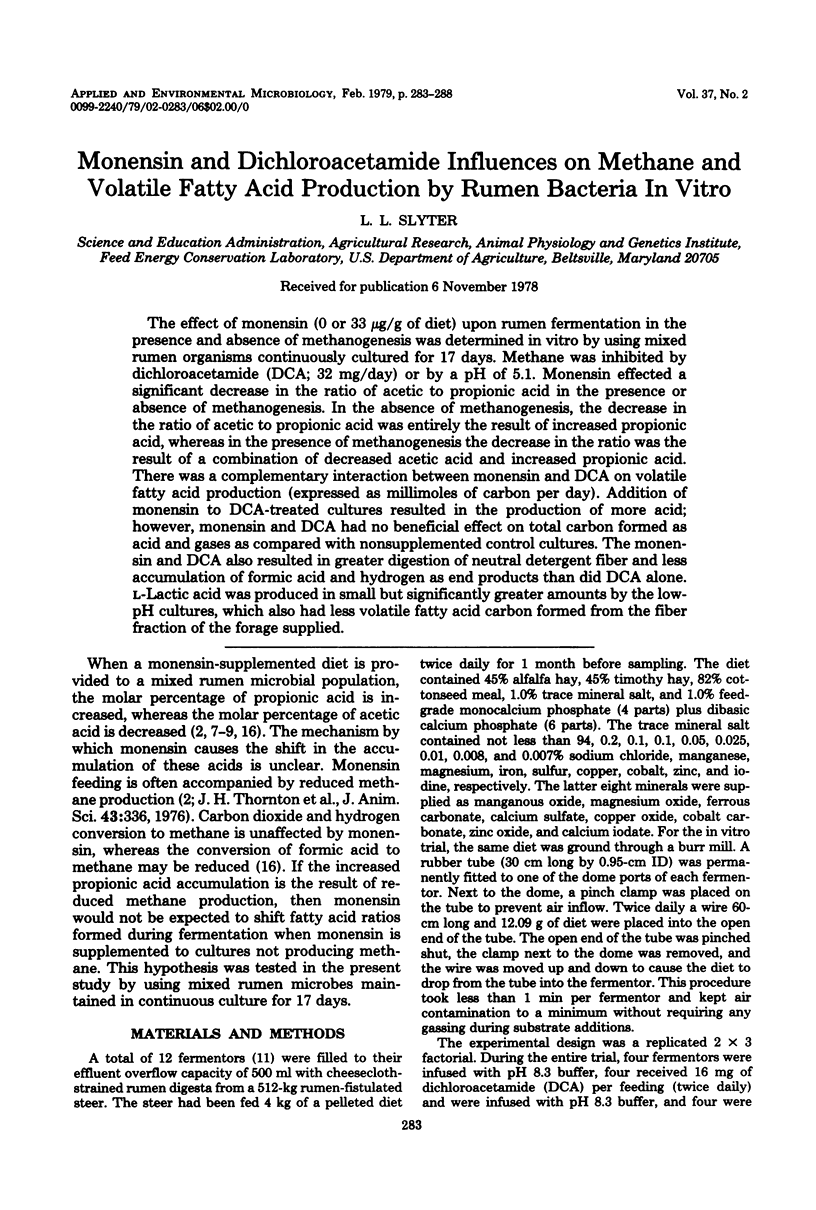
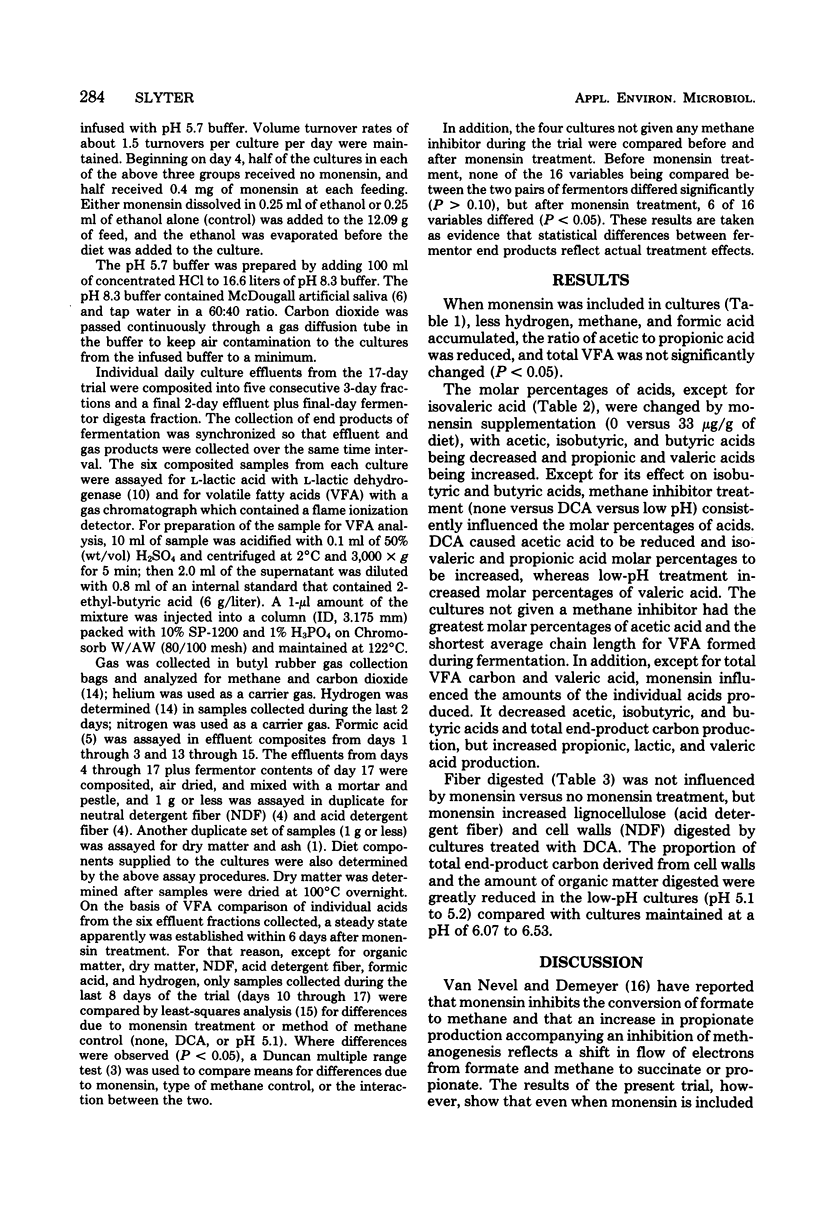
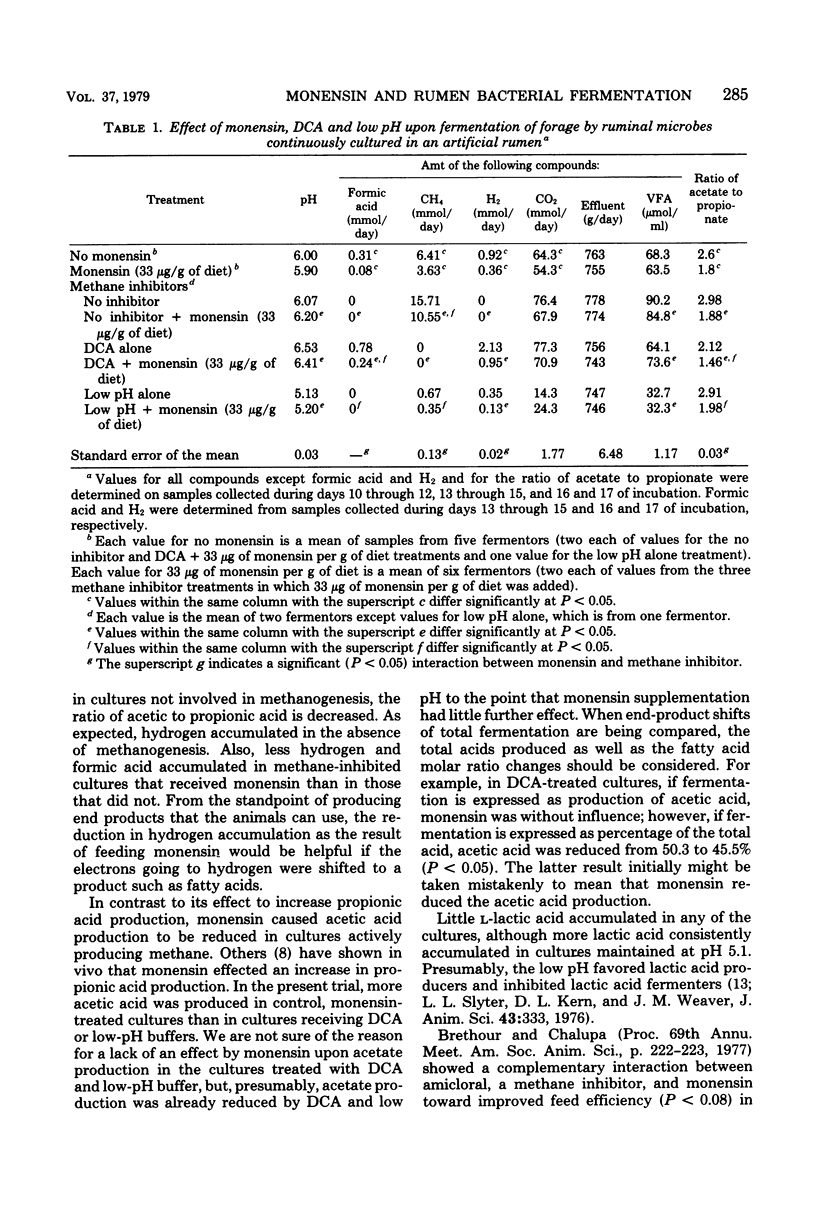

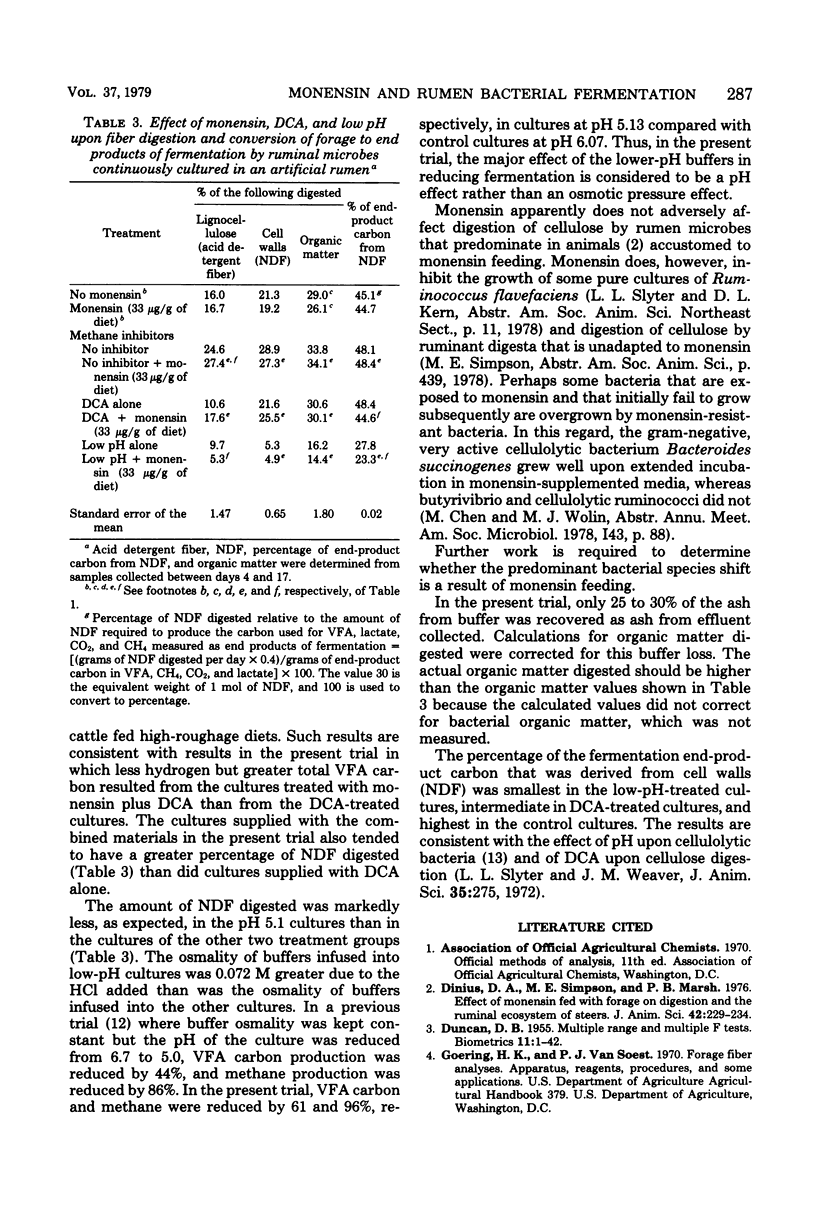
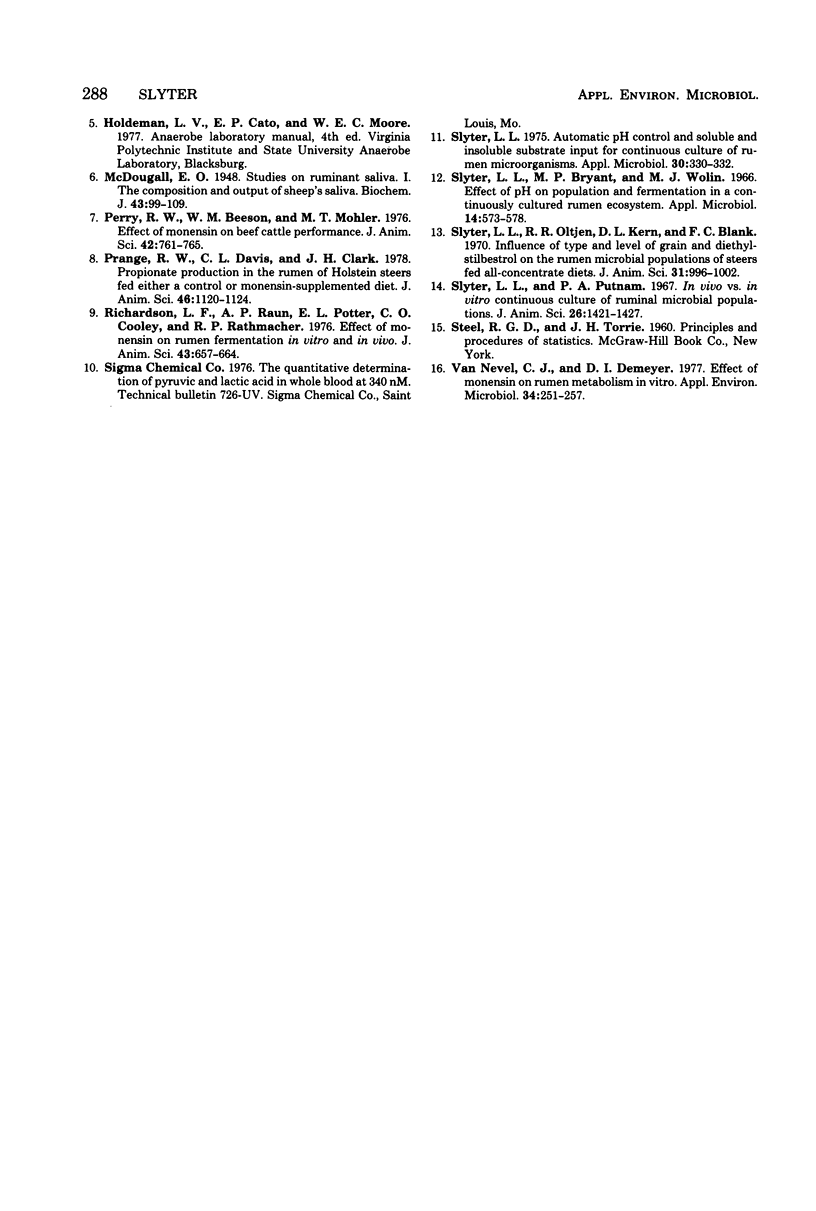
Selected References
These references are in PubMed. This may not be the complete list of references from this article.
- Donius D. A., Simpson M. E., Marsh P. B. Effect of monensin fed with forage on digestion and the ruminal ecosystem of steers. J Anim Sci. 1976 Jan;42(1):229–234. doi: 10.2527/jas1976.421229x. [DOI] [PubMed] [Google Scholar]
- McDougall E. I. Studies on ruminant saliva. 1. The composition and output of sheep's saliva. Biochem J. 1948;43(1):99–109. [PMC free article] [PubMed] [Google Scholar]
- Slyter L. L. Automatic pH Control and Soluble and Insoluble Substrate Input for Continuous Culture of Rumen Microorganisms. Appl Microbiol. 1975 Aug;30(2):330–332. doi: 10.1128/am.30.2.330-332.1975. [DOI] [PMC free article] [PubMed] [Google Scholar]
- Slyter L. L., Bryant M. P., Wolin M. J. Effect of pH on population and fermentation in a continuously cultured rumen ecosystem. Appl Microbiol. 1966 Jul;14(4):573–578. doi: 10.1128/am.14.4.573-578.1966. [DOI] [PMC free article] [PubMed] [Google Scholar]
- Slyter L. L., Oltjen R. R., Kern D. L., Blank F. C. Influence of type and level of grain and diethylstilbestrol on the rumen microbial populations of steers fed all-concentrate diets. J Anim Sci. 1970 Nov;31(5):996–1002. doi: 10.2527/jas1970.315996x. [DOI] [PubMed] [Google Scholar]
- Van Nevel C. J., Demeyer D. I. Effect of monensin on rumen metabolism in vitro. Appl Environ Microbiol. 1977 Sep;34(3):251–257. doi: 10.1128/aem.34.3.251-257.1977. [DOI] [PMC free article] [PubMed] [Google Scholar]


